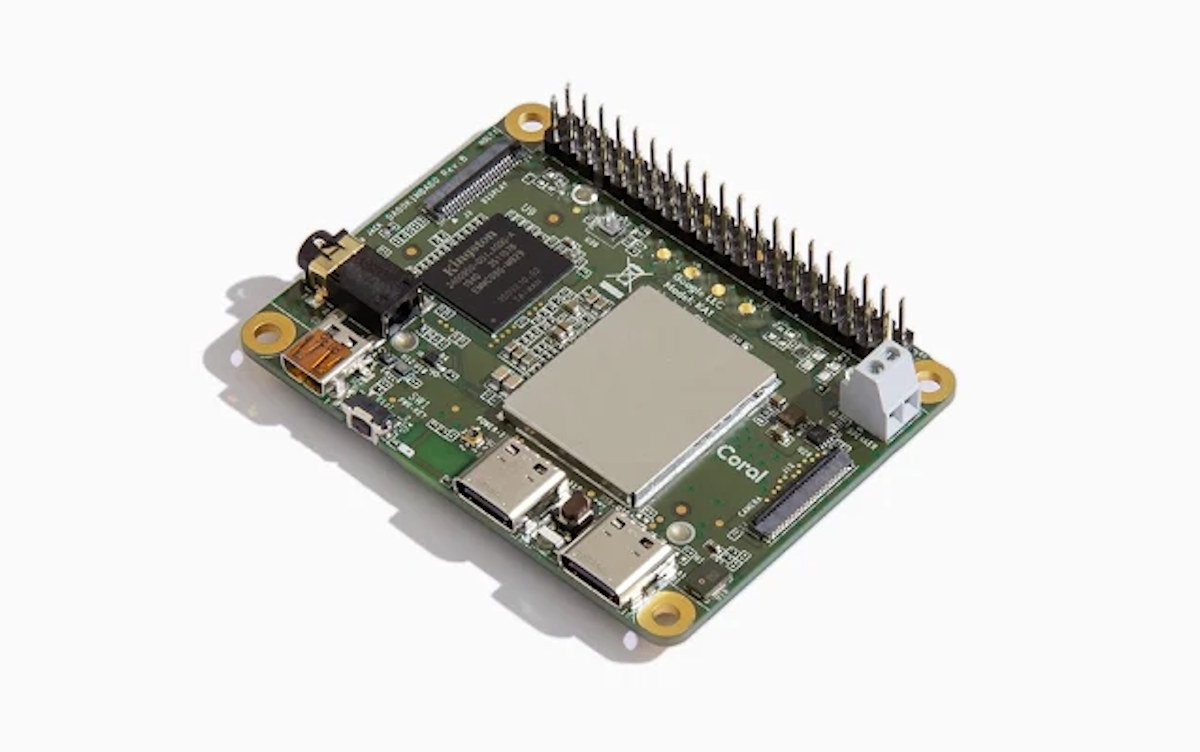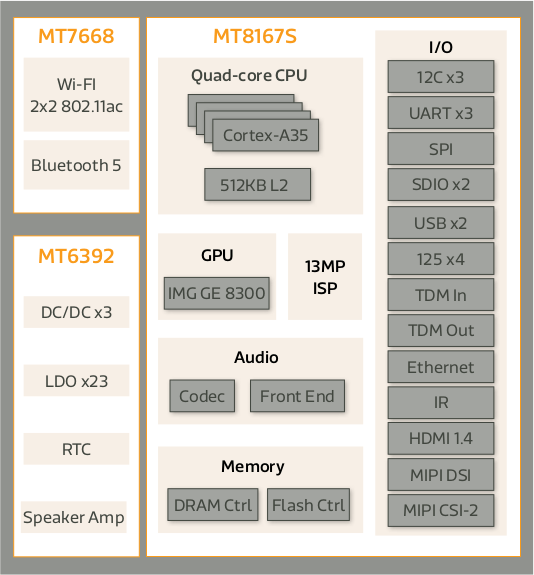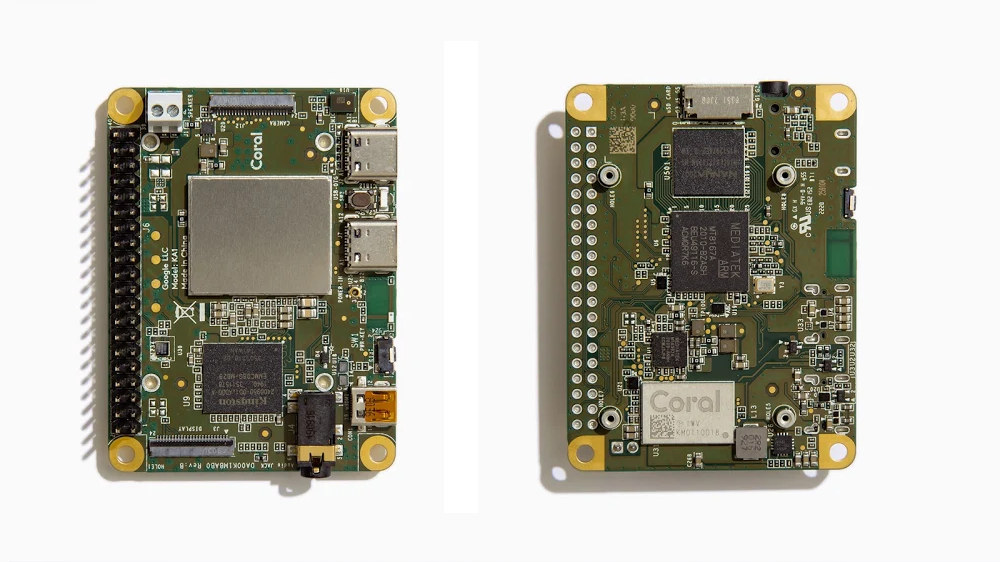Google Coral SBC was the first development board with Google Edge TPU. The AI accelerator was combined with an NXP i.MX 8M quad-core Arm Cortex-A53 processor and 1GB RAM to provide an all-in-all AI edge computing platform.
It launched for $175, and now still retails for $160 which may not be affordable to students and hobbyists. Google announced a new model called Coral Dev Board Mini last January, and the good news is that the board is now available for pre-order for just under $100 on Seeed Studio with shipping scheduled to start by the end of the month.
Coral Dev Board Mini specifications haven’t changed much since the original announcement, but we know a few more details:
- SoC – MediaTek MT8167S quad-core Arm Cortex-A35 processor @ 1.3 GHz with Imagination PowerVR GE8300 GPU
- AI/ML accelerator – Google Edge TPU coprocessor with up to 4 TOPS as part of Coral Accelerator Module
- System Memory – 2GB LPDDR3 RAM
- Storage – 8GB eMMC flash memory
- Connectivity – 802.11a/b/g/n/ac Wi-Fi 5 and Bluetooth 5.0 via MediaTek MT7668 wireless chip
- Video Output
- micro HDMI 1.4 port
- 39-pin FFC connector for 4-lane MIPI-DSI display
- Video – 720p video encoding/decoding
- Camera – 24-pin FFC connector for 4-lane MIPI-CSI2 camera
- Audio – 3.5mm audio jack; digital PDM microphone; 2.54mm 2-pin speaker terminal;
- USB – 2x USB 2.0 Type-C ports
- Expansion – 40-pin GPIO header
- Power Supply – Via USB-C port; MT6392 PMIC
- Dimensions – 64 x 48 mm
The new board is more compact and offers double the memory, but comes with a slower processor that may or may not impact AI inference performance, and lacks Ethernet, full-sized USB ports, and a built-in microphone. While the original board had an HDMI 2.0 port, the Mini board comes with a micro HDMI 1.4 video output instead.
The use cases and features of Coral Dev Board Mini single-board computer remain the same with the platform designed for machine learning (ML) inferencing using the Edge TPU coprocessor capable of performing 4 TOPS using 2 TOPS per watt in theory. For instance, it can run MobileNet v2 at close to 400 FPS at low power using 224×224 images instead of the more traditional 300×300 images as we reported in our post about understanding AI benchmarks.
The board runs Debian based Mendel Linux distribution developed by Google for Coral boards and supports TensorFlow Lite and AutoML Vision Edge with the latter enabling “fast, high-accuracy custom image classification models”.


Jean-Luc started CNX Software in 2010 as a part-time endeavor, before quitting his job as a software engineering manager, and starting to write daily news, and reviews full time later in 2011.
Support CNX Software! Donate via cryptocurrencies, become a Patron on Patreon, or purchase goods on Amazon or Aliexpress






Why did they choose a PowerVR GPU instead of a Mali?
it comes with the cpu